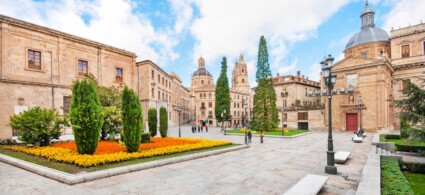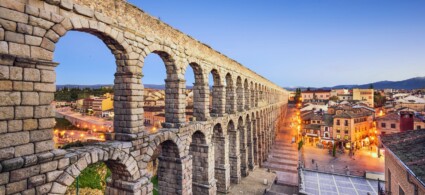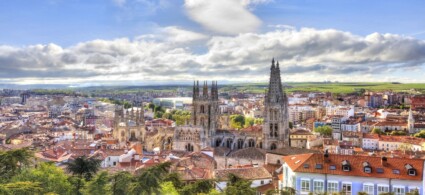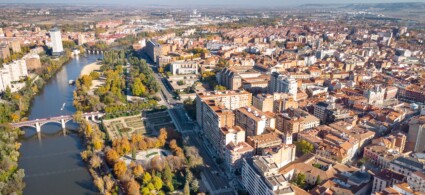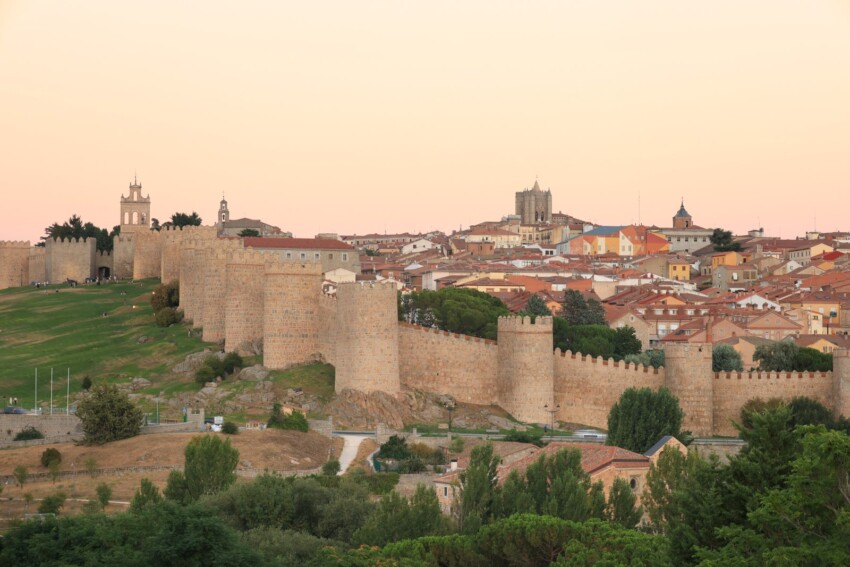

Castile and Leon is the geographical and cultural epicentre of Spain. Located in the centre of the country, it is the birthplace of the Spanish language (which is in fact officially called ‘Castilian’), the cradle of Spanish literature and the custodian of 60% of Spain’s artistic heritage.
It is a land of myths and legends, first and foremost those of the Cid Campeador, hero of the Reconquista whose life is recounted between history and fiction in one of the first important texts in Spanish literature, written a good five centuries before the more famous Don Quixote.
The landscape is the dry and disconsolately romantic landscape of the Meseta Central, a vast plateau whose monotony is occasionally broken by medieval castles, picturesque villages and spectacular peaks in the distance. The soul of Spain seems to rest here, far from the hustle and bustle of fashionable beaches and tourist-friendly nightlife: romantic, noble, elegant and sunny.
Here’s where to start when planning an itinerary in Castile and León: the five places we present below are the most fascinating or historically important in the region, where the most famous attractions are concentrated. However, if you have more time on your hands, we also recommend visiting the gold mines of Las Medulas, the castle of Peñafiel, the mountains of the Sierra de la Culebra and Sierra de Francia, and the picturesque village of Medinaceli.
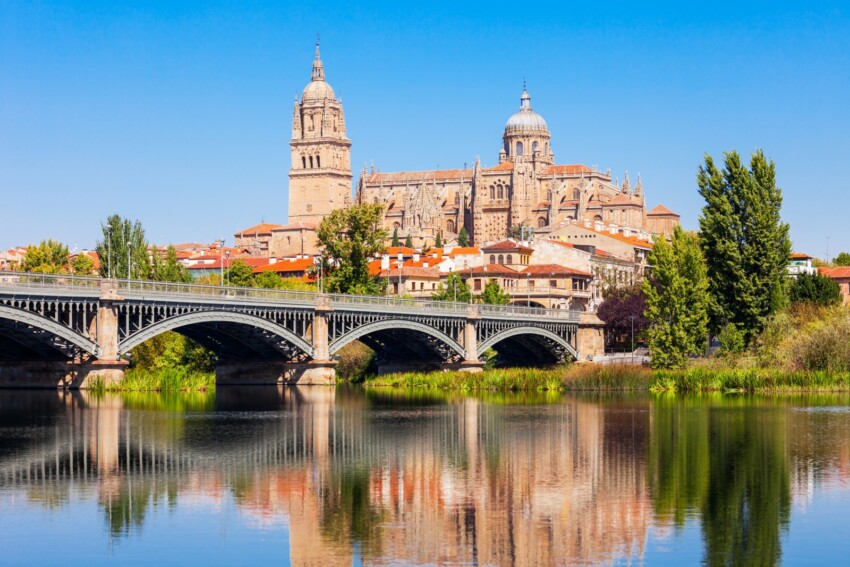
A popular destination for day trips from Madrid, Salamanca deserves a whole weekend: travelling slowly is the best way to fully savour the romantic atmosphere of this city full of splendid palaces and picturesque views. At night, expertly illuminated, the city becomes even more magical.
Salamanca’s top attractions are the magnificent Cathedral, the University (the oldest in Spain) and the wonderful Plaza Mayor.
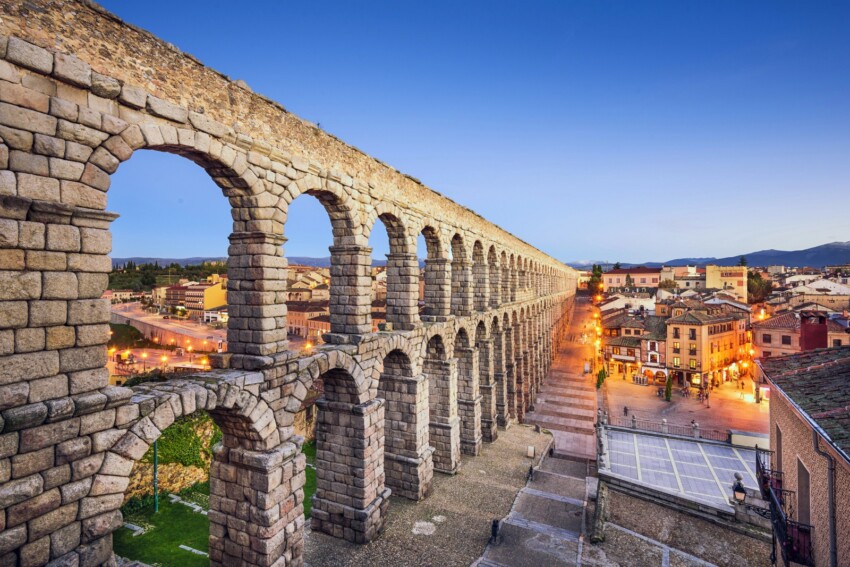
Another must-see on a trip to Castile and León is Segovia, a city of terracotta and pastel pink houses nestled along the rolling hills of Castile with views of the Sierra de Guadarrama mountains.
Segovia’s most famous attraction, which alone is worth a visit to the city, is the monumental Roman Aqueduct: an engineering masterpiece built more than 2000 years ago that today blends perfectly with the modern city. By day it surprises with its grandeur and its portentous structure capable of resisting the passage of centuries; at night it will captivate you with evocative plays of light and shadow.
Other magnificent buildings in the historic centre of Segovia are the Alcazar and the Cathedral.
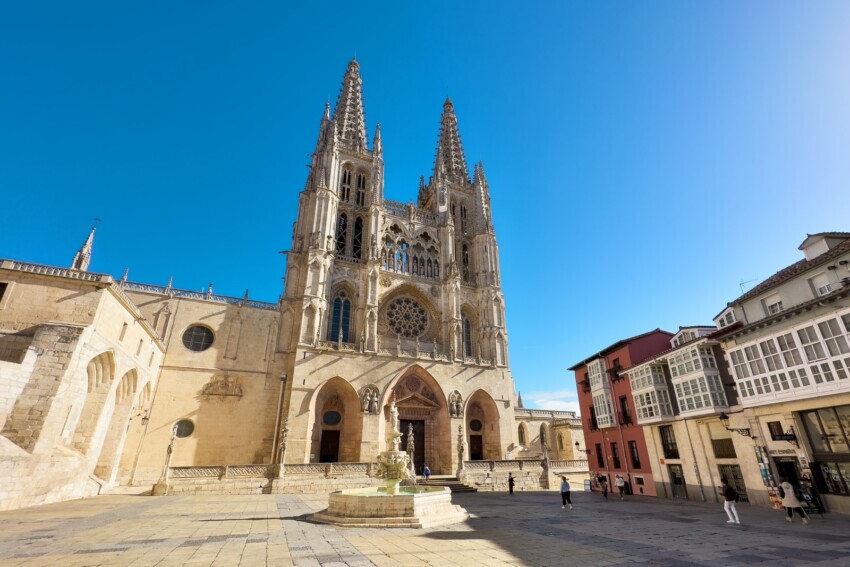
Burgos is a familiar name to those who have done or want to do the Camino de Santiago: it is an important stop on the historic pilgrimage as well as an alternative starting point for those who do not feel up to walking all 800 km of the classic route.
Even for those travelling by car Burgos is a destination not to be missed: here you can admire some of the finest examples of Spanish Gothic architecture (first and foremost the Cathedral), visit original museums and relax with tasty dinners or easy walks in the countryside.
From Burgos you can easily drive to the Archaeological Park of Atapuerca, which stands on the site of the discovery of ancient human bones.
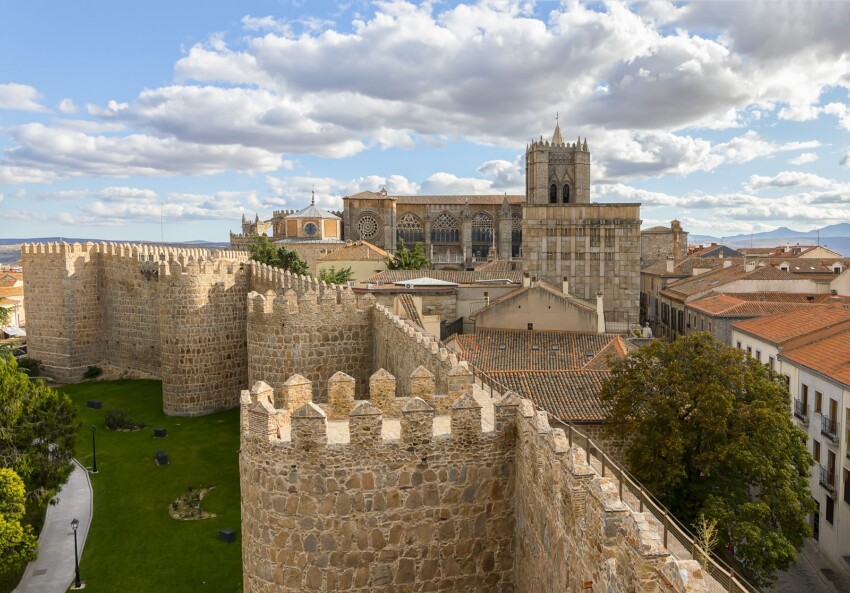
Charming and romantic views also await you in Avila, a fortified city rising more than 1,000 metres above sea level whose historical centre is entirely enclosed within a perfectly preserved mighty city wall.
The walls of Avila are the main attraction of the city. Walk along the two sections open to the public to enjoy splendid panoramic views; if you want to admire the walls with an overall view, move just outside the centre to the Monument of the Four Places.
The centre is full of stately homes and churches; many buildings bear a reference to the life of St Teresa, a Spanish nun and intellectual who lived in the 16th century. Do not confuse her with Mother Teresa of Calcutta, a saint of our times!
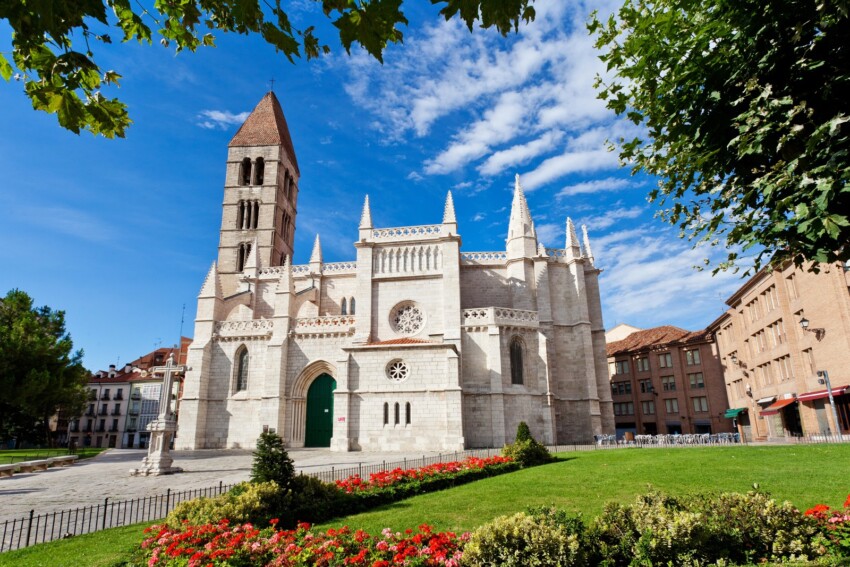
Valladolid ‘s fame is not linked to famous museums and monuments but to its illustrious citizens: King Philip II was born here, the writer Miguel de Cervantes (author of Don Quixote) and Christopher Columbus lived here, the Catholic kings Isabella of Castile and Fernando of Aragon married here.
Each of these famous figures left an imprint on the city, and the main tourist attractions are those dedicated to them. Valladolid can also boast an abundance of palaces and churches not inferior to more visited cities in central-northern Spain and a lively nightlife.
Castile and Leon is very extensive and the sights are scattered more or less all over its territory. They range from the very hot plateau just north of Madrid to the cool northern area on the edge of the Basque Country and Asturias. It is difficult to visit the whole region in one go, but if you want to attempt the feat, we recommend sleeping in Valladolid, as it is located right in the geographical centre, a stone’s throw from the A62 motorway that cuts across the region from south-west to north-east. Incidentally, Burgos and Salamanca are also located along this major road artery.
Alternatively, if you decide to focus only on one part of Castile y León, choose to sleep in Avila so that you are also close to Salamanca and Segovia, or in Burgos for easy access to Leon, Valladolid and Soria. Once you have chosen a city as a base, assess the facilities: on average you will find good hotels and many bed and breakfasts and flats, especially in the historic centres. In the countryside and outside the cities you will also find nice casas rural (the equivalent of our agritourisms) for a holiday in contact with nature.
Castile y León is very wide, and roughly coincides with the slice of Spain that goes from Madrid to the Basque Country, on the north coast of the country. For this reason it can be reached in a plethora of ways: you can, for example, land at Madrid airport and rent a car to explore the southern part of the region, or land in Bilbao or Oviedo and rent a car to explore the northern part. These airports are all well connected with Europe, thanks to low-cost airlines such as Ryanair, Volotea or Vueling.
Castile y León also has its own airport, that of Valladolid, but unfortunately it is very small and not connected to our country.
